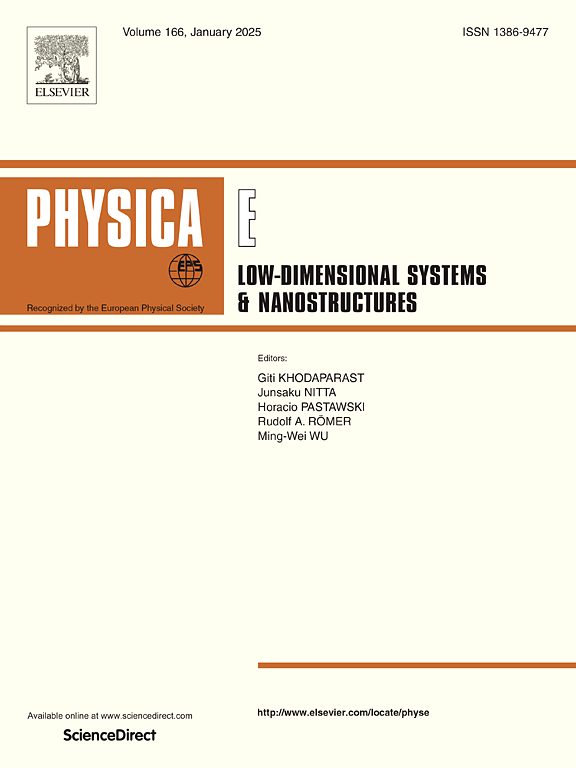Prediction of thermoelectric properties for monolayer BiSbTeSe2
IF 2.9
3区 物理与天体物理
Q3 NANOSCIENCE & NANOTECHNOLOGY
Physica E-low-dimensional Systems & Nanostructures
Pub Date : 2025-02-01
DOI:10.1016/j.physe.2024.116167
引用次数: 0
Abstract
The full-potential linearized augmented plane wave method and the semi-classical Boltzmann theory are used to calculate the thermoelectric properties of monolayer BiSbTeSe2. For the monolayer BiSbTeSe2, the Tran-Blaha-modified Becke-Johnson (TB-mBJ) method calculates a larger band gap than that calculated by the generalized gradient approximation (GGA) method. Where the bandgap calculated by TB-mBJ is 0.94, while the bandgap calculated by GGA is 0.85. The absence of imaginary frequencies in the monolayer BiSbTeSe2 phonon band structure ensures its dynamic stability. The contribution of the optical branch to the lattice thermal conductivity is low due to the strong scattering of the optical branch. So the contribution to the lattice thermal conductivity mainly comes from the acoustic branch. The maximum frequency of the acoustic branch is 1.8. The monolayer BiSbTeSe2 has a low lattice thermal conductivity due to the low frequency of the acoustic branch. AIMD simulations confirm its thermal stability. Finally, the ZT value of monolayer BiSbTeSe2 is calculated using TB-mBJ to peak at about 0.98 at a carrier concentration of 2 × 1020 cm−3 and a temperature of 1125 K. The ZT value of monolayer BiSbTeSe2 is calculated using TB-mBJ.
求助全文
约1分钟内获得全文
求助全文
来源期刊
CiteScore
7.30
自引率
6.10%
发文量
356
审稿时长
65 days
期刊介绍:
Physica E: Low-dimensional systems and nanostructures contains papers and invited review articles on the fundamental and applied aspects of physics in low-dimensional electron systems, in semiconductor heterostructures, oxide interfaces, quantum wells and superlattices, quantum wires and dots, novel quantum states of matter such as topological insulators, and Weyl semimetals.
Both theoretical and experimental contributions are invited. Topics suitable for publication in this journal include spin related phenomena, optical and transport properties, many-body effects, integer and fractional quantum Hall effects, quantum spin Hall effect, single electron effects and devices, Majorana fermions, and other novel phenomena.
Keywords:
• topological insulators/superconductors, majorana fermions, Wyel semimetals;
• quantum and neuromorphic computing/quantum information physics and devices based on low dimensional systems;
• layered superconductivity, low dimensional systems with superconducting proximity effect;
• 2D materials such as transition metal dichalcogenides;
• oxide heterostructures including ZnO, SrTiO3 etc;
• carbon nanostructures (graphene, carbon nanotubes, diamond NV center, etc.)
• quantum wells and superlattices;
• quantum Hall effect, quantum spin Hall effect, quantum anomalous Hall effect;
• optical- and phonons-related phenomena;
• magnetic-semiconductor structures;
• charge/spin-, magnon-, skyrmion-, Cooper pair- and majorana fermion- transport and tunneling;
• ultra-fast nonlinear optical phenomena;
• novel devices and applications (such as high performance sensor, solar cell, etc);
• novel growth and fabrication techniques for nanostructures

 求助内容:
求助内容: 应助结果提醒方式:
应助结果提醒方式:


